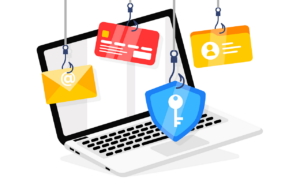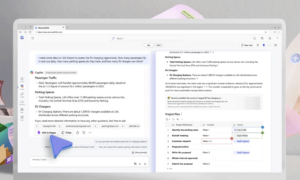As technology continues to evolve, so do the threats that businesses face. Cybersecurity is a critical concern for any organization, and regular security testing and network monitoring are essential for maintaining robust defenses. In this month’s Insight, we’ll explore the importance of routine security tests and network monitoring and share some actionable tips for bolstering your cyber defenses.
Essential Security Testing Methods
First, let’s discuss two of the most efficient security testing methods and strategies that can enhance your organization’s cyber defenses.
Vulnerability Assessments
This method involves using automated tools to scan networks, systems, and applications for known vulnerabilities, misconfigurations, or weaknesses. It helps organizations build a robust cybersecurity posture by proactively prioritizing and addressing potential threats before they can do any harm.
Penetration Testing
Also known as pen testing, this involves simulating real-world cyberattacks on an organization’s network. The simulations provide valuable insights that help organizations identify and address security gaps before they can be exploited by cybercriminals.
Each method provides unique insights into your system’s security posture, and a comprehensive security strategy often involves a combination of these methods.
Security Testing Frequency and Effectiveness
The frequency of security testing depends on several factors, including your organization’s risk tolerance, the nature of your applications, and regulatory requirements. Some guidelines for performing security testing include integrating security testing into your Continuous Integration/Continuous Deployment (CI/CD) pipelines; conducting regularly scheduled tests; retesting after significant changes; and performing pre-production and regression testing before major releases or deployments. Linking the timing of security testing to one or more of these guidelines will ensure that this critical testing in your organization is occurring intentionally.
Measuring the effectiveness of security testing is essential to ensure that your efforts yield meaningful results and enhance your organization’s security posture.
Key metrics to consider include:
- Coverage metrics measure the extent to which security testing has covered the system or application.
- Vulnerability discovery metrics track the number, severity, and types of vulnerabilities found during security testing.
- Time metrics measure the time taken to complete security testing and to remediate vulnerabilities.
- Risk reduction metrics measure the effectiveness of security testing in reducing the overall risk to the system or application.
- Regression metrics track whether previously resolved vulnerabilities have reappeared.
- Security testing cost metrics measure the cost of conducting security testing, including personnel, tools, and infrastructure costs.
- User impact metrics measure the impact of security testing and remediation on the user experience.
- Compliance metrics track compliance with relevant regulations and standards.
- Feedback from stakeholders measures the satisfaction of stakeholders with the security testing process and outcomes.
- Benchmarking compares the organization’s security testing performance against industry standards or best practices.
Network Monitoring
Network monitoring is another critical aspect of cybersecurity. A healthy and secure network is critical for seamless communication and operational efficiency. Proactively identifying issues and optimizing performance through continuous network security monitoring can help ensure robust network security.
Hidden Challenges of Network Monitoring
However, as you keep a close watch, you’ll discover many issues lurking beneath the surface. Some of the hidden challenges of network monitoring include:
Data overload
- There are various devices and systems connected to a network, and at times they can generate an overwhelming volume of information, slowing down the monitoring process.
- The sheer abundance of information makes it challenging to manage, analyze or derive any meaningful insights from the data. In such a situation, you can easily miss out on critical issues that can adversely affect your business.
Complexity
- Modern networks are complex. Every device, application or system within the network is diverse. Without sophisticated tools and specialized expertise, it would be like solving a puzzle blindfolded.
Integrations with legacy systems
- Integrating older legacy systems into modern monitoring frameworks can be tough. Failing to properly integrate older tools with current technology can leave visibility gaps and affect the overall performance.
- That’s why it’s critical for your business to implement monitoring solutions that not only keep pace with evolving technologies but also integrate with older systems as well.
Costs
- To ensure your network monitoring tools offer peak performance, you must keep up with the latest tech. However, monitoring tools can be costly, and businesses with budget constraints might find themselves vulnerable to the latest cyberthreats.
- Partnering with an IT service provider can be a great way to secure your business network without breaking the bank.
Scalability
- As your business grows, so do the number of devices connected to your network and the volume of data as well. However, if your monitoring tools can’t scale to meet the need, it will adversely affect its ability to provide accurate and timely insights.
- To overcome scalability issues, you must invest in monitoring solutions that can expand and keep up with your growing needs.
Privacy concerns
- As part of the network monitoring framework, the tools and solutions may record and analyze sensitive data, raising compliance concerns and privacy challenges. The problems related to privacy arise when the network monitoring practices don’t meet compliance standards, leading to legal repercussions and penalties.
- That’s why it is a good practice to implement robust security measures, adopt encryption technologies and adhere to relevant privacy regulations.
Skill gaps
- To efficiently monitor your network, you need professionals with expertise in network monitoring. However, the challenge is to find people who can achieve results without compromising your business needs.
- Investing in good training programs, hiring professionals with vast expertise and encouraging a culture of continuous learning can help you reduce the skill gap.
Dynamic environments
- A network is like a thriving ecosystem that is continuously evolving, and your network monitoring efforts must stay up to date if you want to stay ahead of potential issues.
- To address the challenge of dynamic environments, you must embrace agile monitoring solutions, leverage automation for quicker adjustments and adopt continuous improvement practices.
Here are some actionable tips for bolstering your cyber defenses with routine security tests and network monitoring:
- Implement regular security testing: Schedule routine security tests for your applications and network infrastructure. Regular assessments help identify vulnerabilities early and prevent potential breaches.
- Combine different testing approaches: Use a mix of Penetration Testing, Vulnerability Assessments, Static Analysis, and Dynamic Scans. Each method provides unique insights into your system’s security posture.
- Prioritize critical vulnerabilities: When vulnerabilities are discovered, prioritize fixing critical issues first. Focus on vulnerabilities that can lead to data breaches or system compromise.
- Automate security testing in CI/CD pipelines: Integrate security tests into your continuous integration and deployment pipelines. Automated scans catch issues early and prevent regressions.
- Stay informed about emerging threats: Regularly monitor security news, advisories, and industry reports. Understand new attack techniques and vulnerabilities.
- Involve developers in security testing: Educate developers about secure coding practices. Encourage them to participate in code reviews and understand common vulnerabilities.
- Assess third-party dependencies: Use Software Composition Analysis (SCA) tools to identify vulnerabilities in third-party libraries. Keep dependencies updated.
- Monitor and respond to incidents: Set up monitoring for suspicious activities. Have an incident response plan ready to handle security breaches.
- Document security policies and procedures: Create clear security guidelines for your team. Document procedures for handling vulnerabilities, patch management, and access controls.
- Regularly review and update security controls: Periodically assess firewalls, access lists, and routing configurations. Remove unnecessary rules and tighten security where needed.
- Proactively monitor your network: Implement continuous network security monitoring to identify issues and optimize performance.
- Manage data overload: Use tools and techniques to manage, analyze, and derive meaningful insights from the large volume of information generated by your network.
- Reduce false positives and alert fatigue: Fine-tune your monitoring tools to reduce false positives and alert fatigue.
In conclusion, cybersecurity is an ongoing journey. By implementing these practical steps, organizations can strengthen their cyber resilience and protect critical assets. Remember to stay vigilant, regularly assess your defenses, and adapt to evolving threats.







